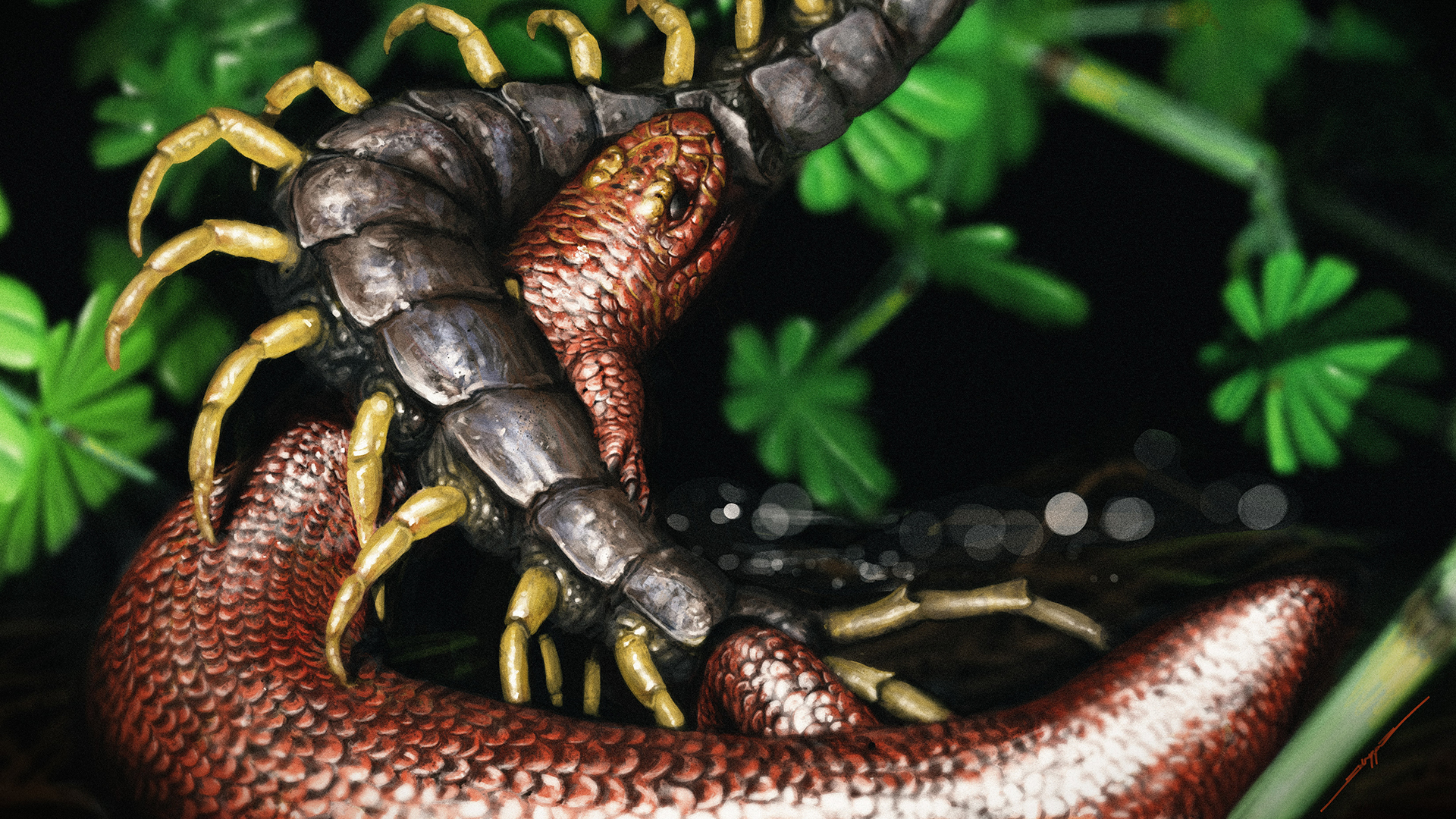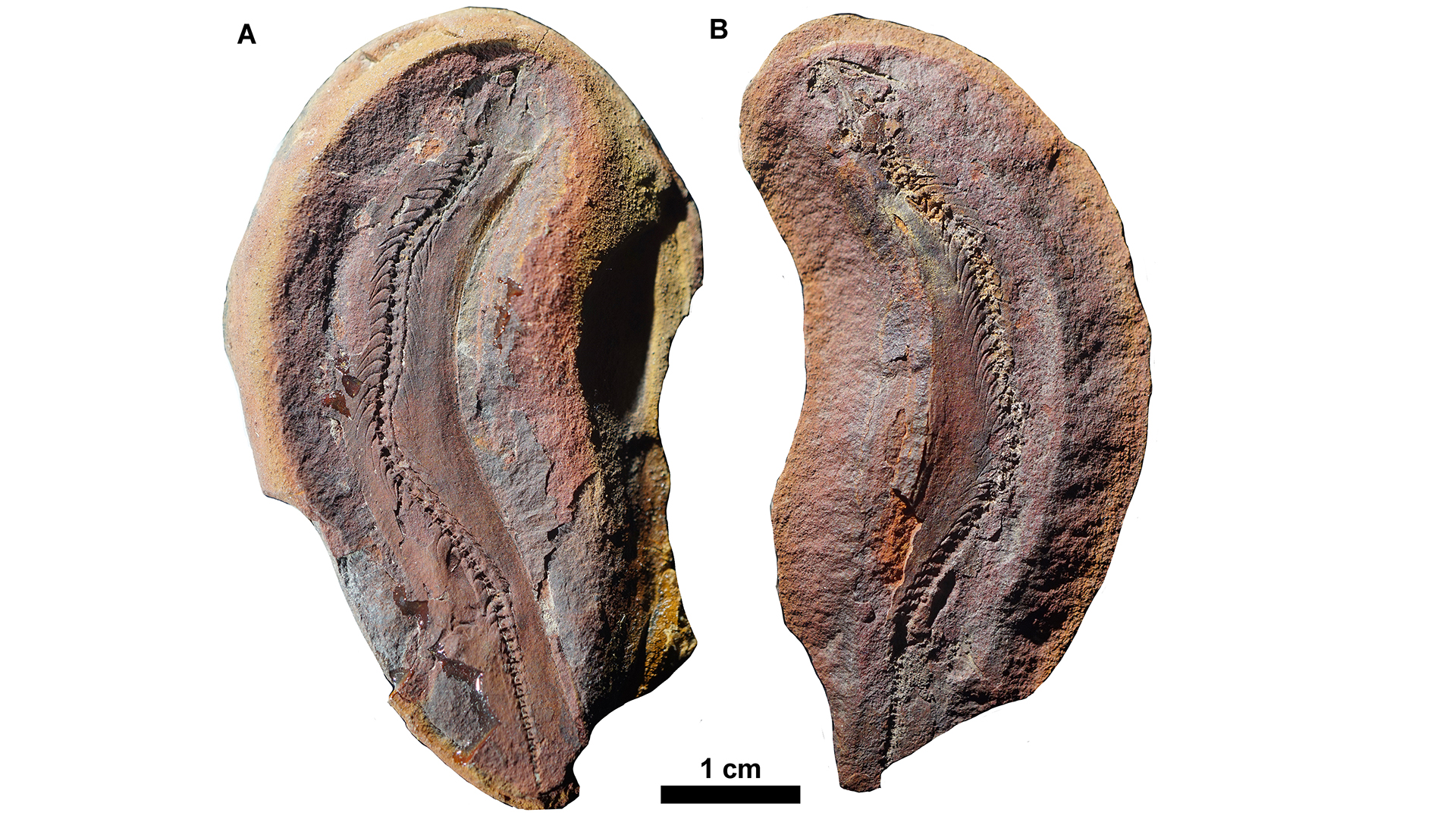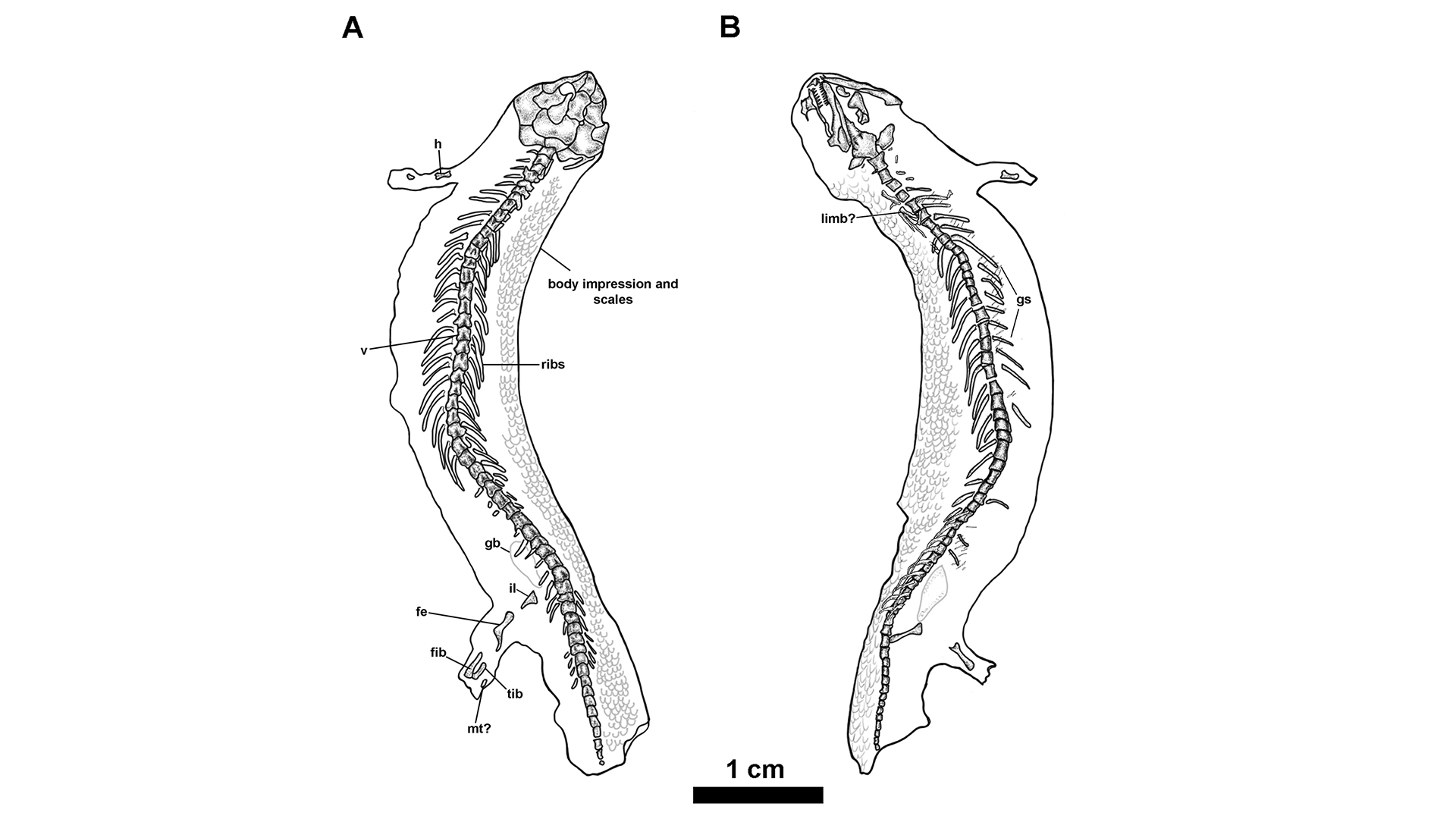Tiny ancient reptile named after Thor's world-ending nemesis
The near-complete fossil dates to about 310 million years ago.

A long-bodied, sinuous reptile that lived about 310 million years ago has been named for a legendary giant snake in Viking mythology that once battled Thor, the Norse god of thunder.
But while the Vikings' mythic "World Serpent," named Jörmungandr, was large enough to wrap his body around the entire Earth, the ancient reptile Joermungandr bolti (YOR'-mun-gund BOL'-tee) measures just a couple of inches long.
This creature is a microsaur ("small lizard"), an early group of reptiles that were among the first vertebrates (animals with backbones) to evolve on land. J. bolti had a slender, elongated body with short limbs and a blunt skull, and the fossil was so well preserved that it retained impressions of specialized scales that resemble dirt-repelling scales in modern reptiles. Together, these features suggest that the wee microsaur tunneled underground and slithered like a snake, researchers reported in a new study.
Related: Wipe out: History's most mysterious extinctions
The microsaur fossil was in the collection of Chicago's Field Museum, and it came from Mazon Creek in Illinois, where deposits have preserved numerous fossils of complete or near-complete organisms dating to the Carboniferous period (about 359 million to 299 million years ago). Microsaurs represent some of the oldest fossils of amniotes, vertebrates that develop embryos in fluid-filled eggs with multiple membrane layers, according to the University of California Museum of Paleontology in Berkeley.
J. bolti ("bolti" is a nod to the late paleontologist John R. Bolt, an emeritus curator of fossil amphibians and reptiles at the Field Museum) is a microsaur from a group called Recumbirostra, which was around for about 40 million to 50 million years, "from the middle of the Carboniferous to the early Permian [299 million to 251 million years ago]," said lead study author Arjan Mann, a postdoctoral fellow of paleobiology at the Smithsonian National Museum of Natural History in Washington, D.C.
Mann conducted the microsaur research while pursuing a doctoral degree in the Department of Earth Sciences at Carleton University in Ottawa, Canada. He had previously described two microsaur species, naming the genuses Diabloroter ("devil digger") and Infernovenator ("hell hunter"), according to a 2019 statement.
Sign up for the Live Science daily newsletter now
Get the world’s most fascinating discoveries delivered straight to your inbox.

Mann told Live Science that most fossils in this microsaur group come from the Permian, so J. bolti offered the scientists a rare glimpse of an earlier microsaur. Its body, which measured just 1.9 inches (5 centimeters) from nose to tail tip, was "streamlined, cylindrical and relatively smooth," with stubby limbs and tapered tailbones that hinted its tail was short and rounded, "similar to the morphology of the tails of some modern geckos and some skinks, which use their tails for fat storage," the study authors wrote.
Oval, ridged scales covered the body, and the robust skull had some fused bones, likely to help the microsaur withstand the pressures of digging, Mann said.
"We think this was something like a headfirst burrower; the head would smack into the soil to dig holes like modern reptiles do," Mann said J. bolti's elongated shape would have enabled the microsaur to wriggle and writhe over the ground like a snake, and "its scales appear to have patterns that are similar to what we see in modern fossorial [digging] reptile scales, which may have been used to shed dirt."

If microsaurs are indeed early amniotes, J. bolti's snakelike form (and the elongated body shapes of other microsaurs) offer a new perspective on how quickly animals' bodies diversified once they crawled onto dry land from the ocean. Most early amniotes look like small lizards, and current interpretation of the fossil record suggests that the transition to more diverse forms was slow. However, J. bolti and other long-bodied microsaurs suggest otherwise, Mann said.
"This means the evolution of amniotes was an explosive radiation, where as soon as they're on land, they diversify into all these different body forms," Mann said. "That's a much different narrative than what we currently think. We might have had diversity almost on par of what we see today, very quickly."
The findings were published July 21 in the journal Royal Society Open Science.
Originally published on Live Science.

Mindy Weisberger is an editor at Scholastic and a former Live Science channel editor and senior writer. She has reported on general science, covering climate change, paleontology, biology and space. Mindy studied film at Columbia University; prior to Live Science she produced, wrote and directed media for the American Museum of Natural History in New York City. Her videos about dinosaurs, astrophysics, biodiversity and evolution appear in museums and science centers worldwide, earning awards such as the CINE Golden Eagle and the Communicator Award of Excellence. Her writing has also appeared in Scientific American, The Washington Post and How It Works Magazine. Her book "Rise of the Zombie Bugs: The Surprising Science of Parasitic Mind Control" will be published in spring 2025 by Johns Hopkins University Press.










